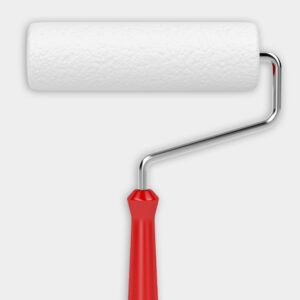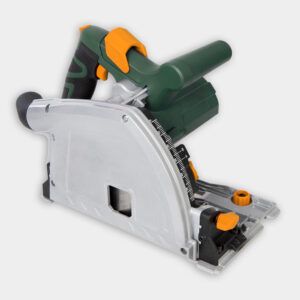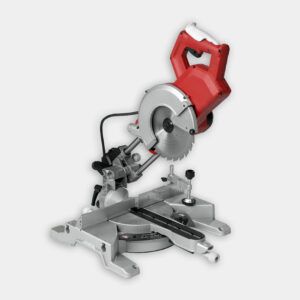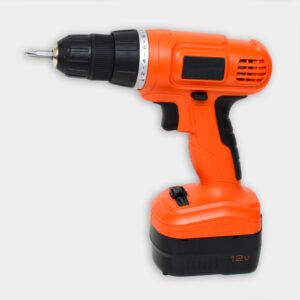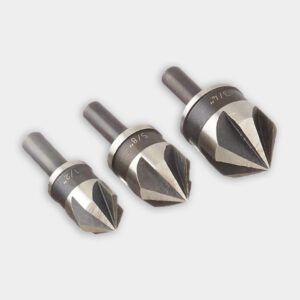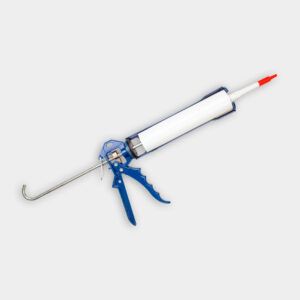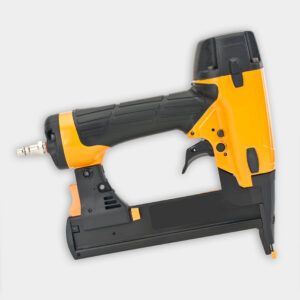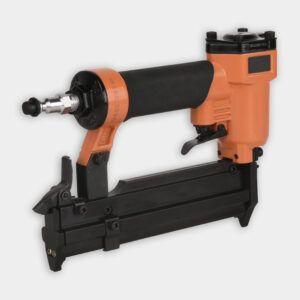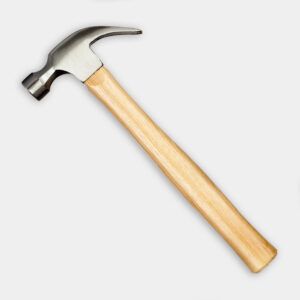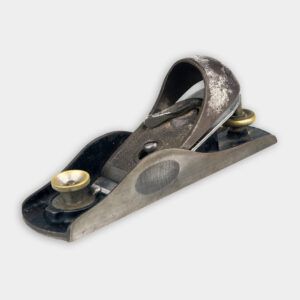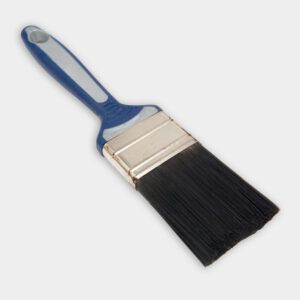Project details
Skill
Cost
Estimated Time
Homeowners who want to add old-barn charm to their bedrooms should consider installing their own rustic headboards. With just a few basic tools and materials, you can add the warmth of weathered wood to a contemporary headboard piece. Read how to build a do-it-yourself wood headboard in 10 simple steps below.
How To Build a DIY Wood Headboard
Follow the simple instructions below to create a unique piece that adds warmth and character to your sleeping space.
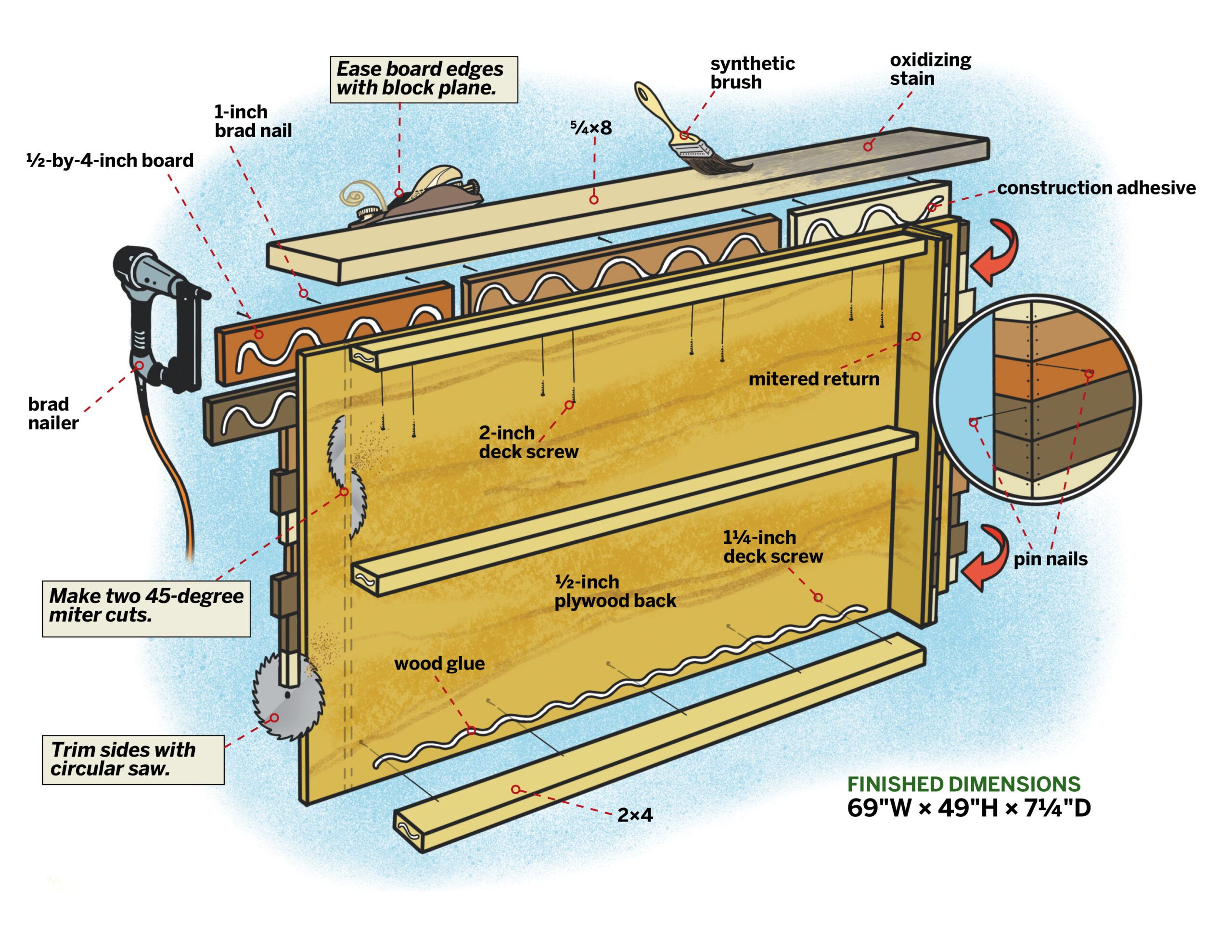
Tools & Materials
Gather the tools and materials below before you start your construction project:
- 2–Synthetic bristle paintbrush
- Block plane
- Brad nailer
- Caulk gun
- Cordless drill/driver
- Countersink drill bit
- Hammer
- Mini paint roller and tray
- Miter saw
- Pin nailer
- Track saw
1. Paint and Cut the Back
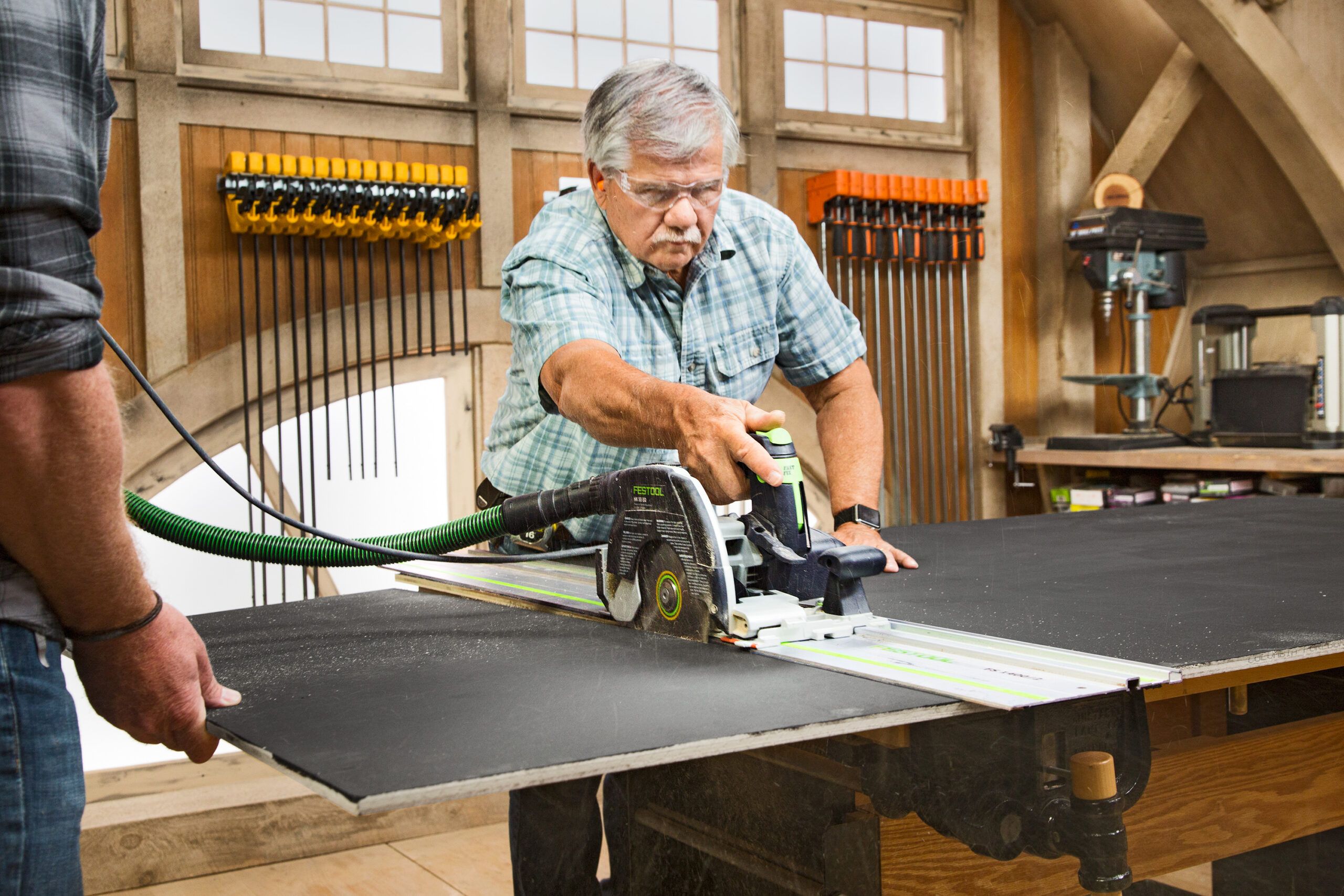
The first step in creating your rustic headboard is preparing the base. Start by selecting a sheet of 1/2-inch birch plywood, which will serve as the foundation for your headboard. Continue with the steps below.
- Roll flat black paint on one side of the plywood panel. This dark background will create the illusion of shadows between the wooden planks.
- Allow the paint to dry completely before proceeding.
- Use a track saw or circular saw with a guide to trim the plywood to a rough size. The width should be approximately 10 inches wider than your headboard’s final width.
The final size of your headboard is flexible, and you should customize it to your room’s dimensions. This initial painting step lays the foundation for the rustic, textured look that will define your finished piece.
2. Add Structure
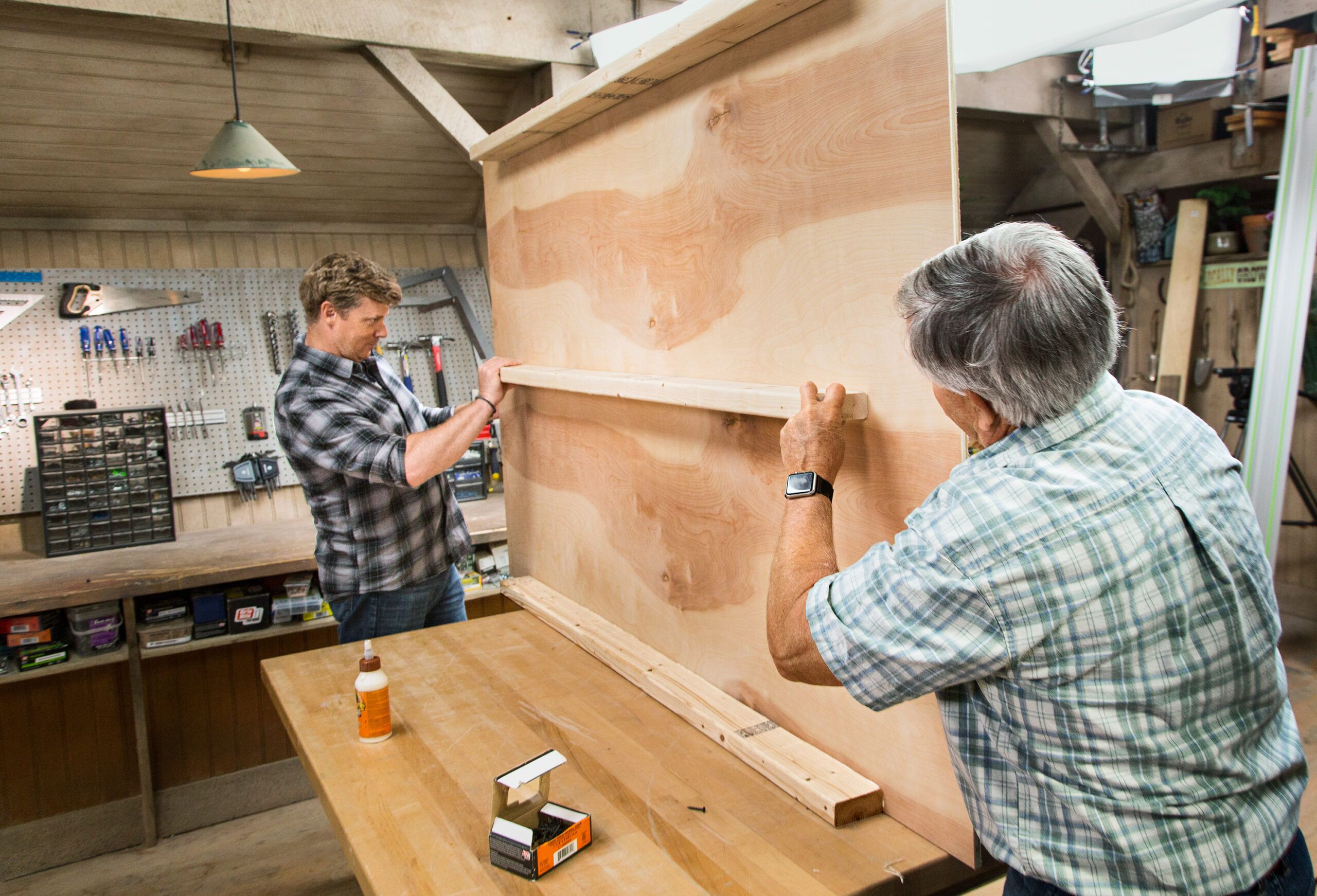
You’ll need to reinforce the plywood backing with two-by-fours to provide stability and support for your headboard. Follow these steps:
- Cut three two-by-fours to a length that’s 1 inch shorter than the headboard’s final width.
- Apply wood glue along the edge of one two-by-four and center it along the top edge of the plywood’s unpainted side.
- Secure the two-by-four with 1 1/4-inch screws, and space them every 6-8 inches.
- Repeat this process for the bottom edge of the plywood.
- Install the third two-by-four between the top and bottom pieces, and center them vertically on the plywood.
Make sure you properly align and attach the two-by-fours to make your construction as durable as possible.
3. Lay the First Course

Start adding the rustic wooden planks that will give your headboard its distinctive look. We recommend using kiln-dried poplar boards, which offer a weathered appearance without the risks that are associated with reclaimed barn wood. Follow the steps below.
- Apply construction adhesive to the back of your first board.
- Position the board along the top edge of the plywood, and allow it to overhang by 1/2 inch on one side.
- Secure the board with 1-inch brad nails, and space them every 8–10 inches.
- Cut a second board to length, and make sure it overhangs the opposite side by 1/2 inch when you butt it against the first board.
- Make sure you’ve aligned your boards properly with consistent overhangs before nailing the second board.
4. Finish All the Courses
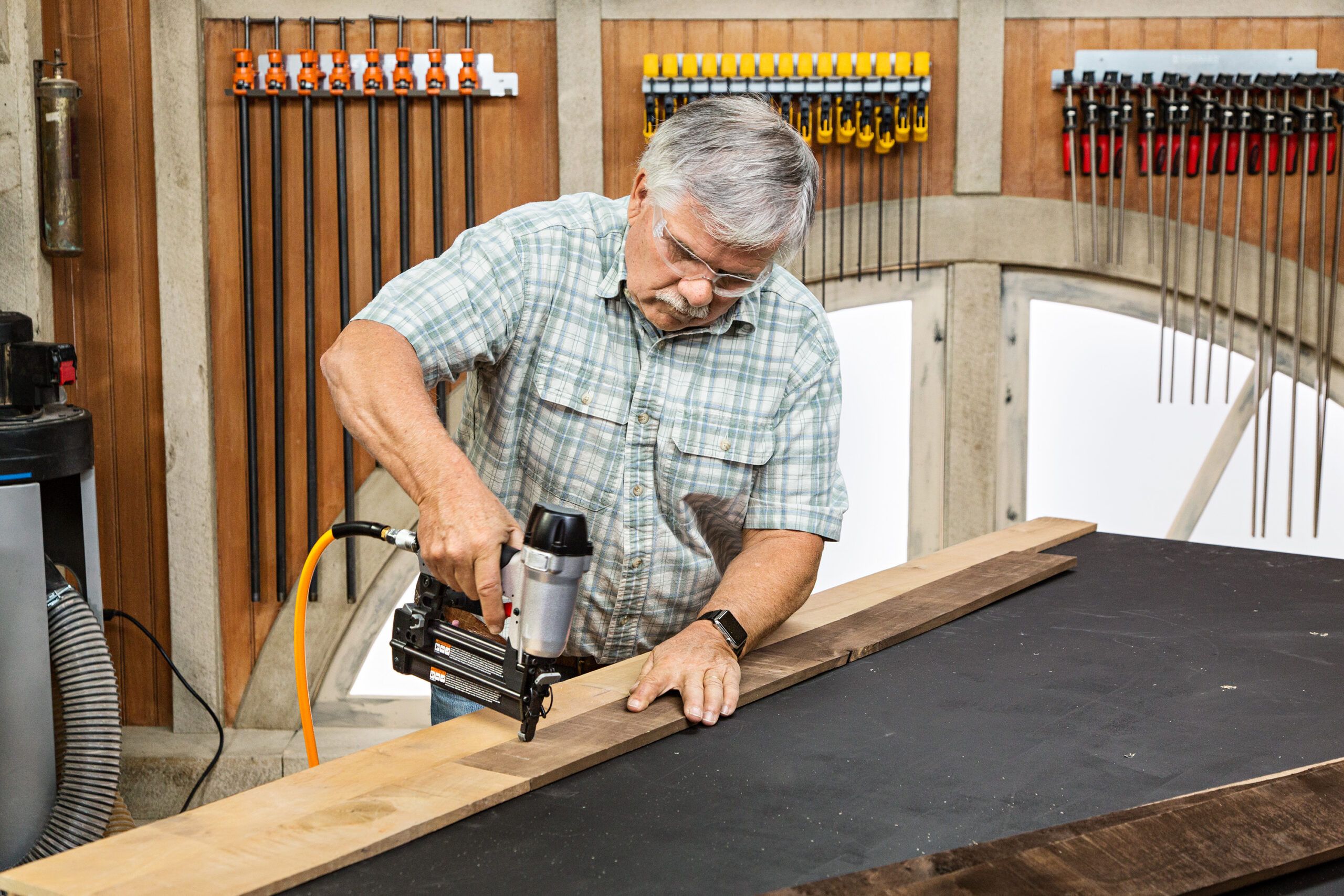
Leave occasional small gaps between boards to create a rustic look and allow for natural wood movement. This staggered approach adds visual interest and reduces waste. Follow the steps below.
- Start each new row with the offcut from the previous row to create a staggered joint pattern.
- Mix different shades of wood randomly to mimic a rustic appearance.
- Maintain a 1/2-inch overhang on both sides of the headboard.
- Apply adhesive and secure each board with brad nails as you go.
- Check frequently to make sure your work is level and properly aligned.
5. Cut the Returns
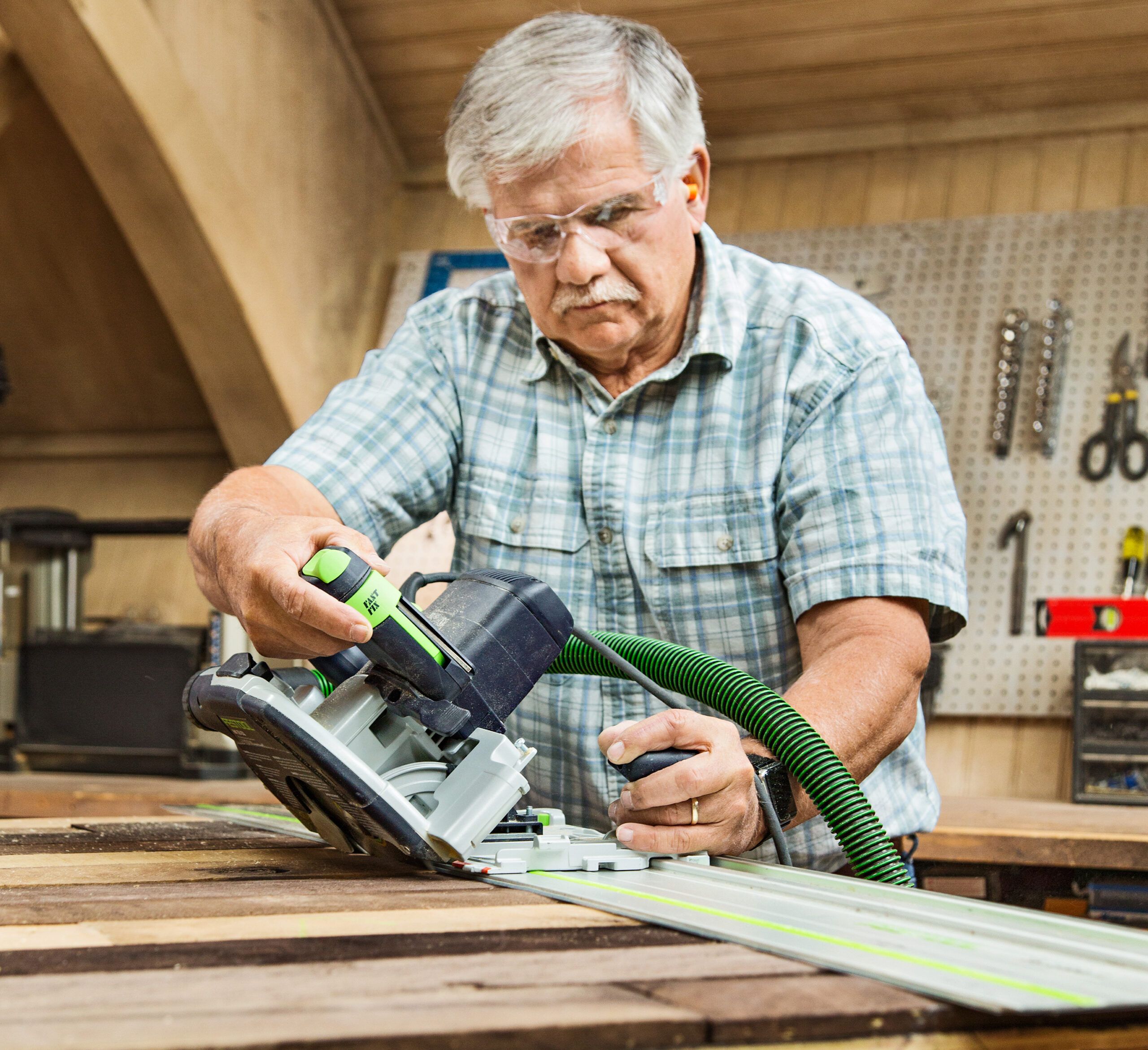
The returns are side pieces that add depth to your project. Follow the steps below to create them:
- Use a track saw or circular saw with a guide to trim the overhanging ends of the boards so that they’re flush with the plywood edges.
- Tilt the saw blade to a 45-degree angle, and angle it toward the headboard.
- Cut a 4 3/4-inch wide strip off both sides of the headboard.
- Flip the saw to the opposite 45-degree angle and make another cut on both sides. Align the blade so that it just touches the upper corner of each two-by-four.
6. Attach the Mitered Returns
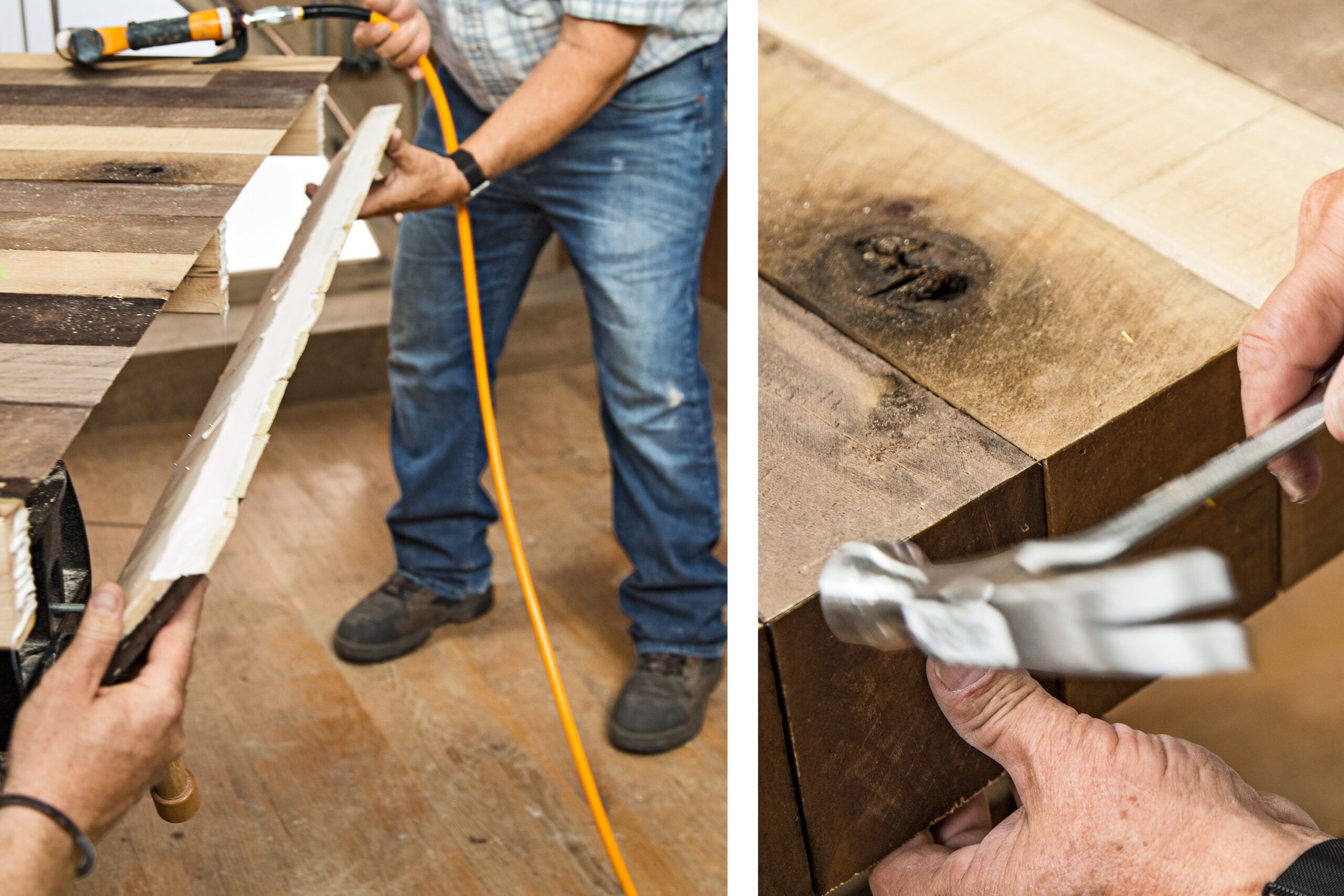
Attaching mitered returns requires precision and patience. Follow the steps below.
- Apply construction adhesive to the ends of the two-by-fours and along the mitered edges of corresponding return strips.
- Position the return strip so that the mitered side faces up, and align it with the two-by-fours and the miter cut on the headboard.
- Ask a helper to hold the piece in place while you secure it.
- Use a pin nailer to fasten the mitered joint, and shoot pins every few inches along the seam.
Gently tap along the mitered joining with a hammer to slightly crush the wood fibers, which will make the seam less visible. This technique creates a rustic appearance and minimizes the visibility of the joints.
7. Fasten the Sides
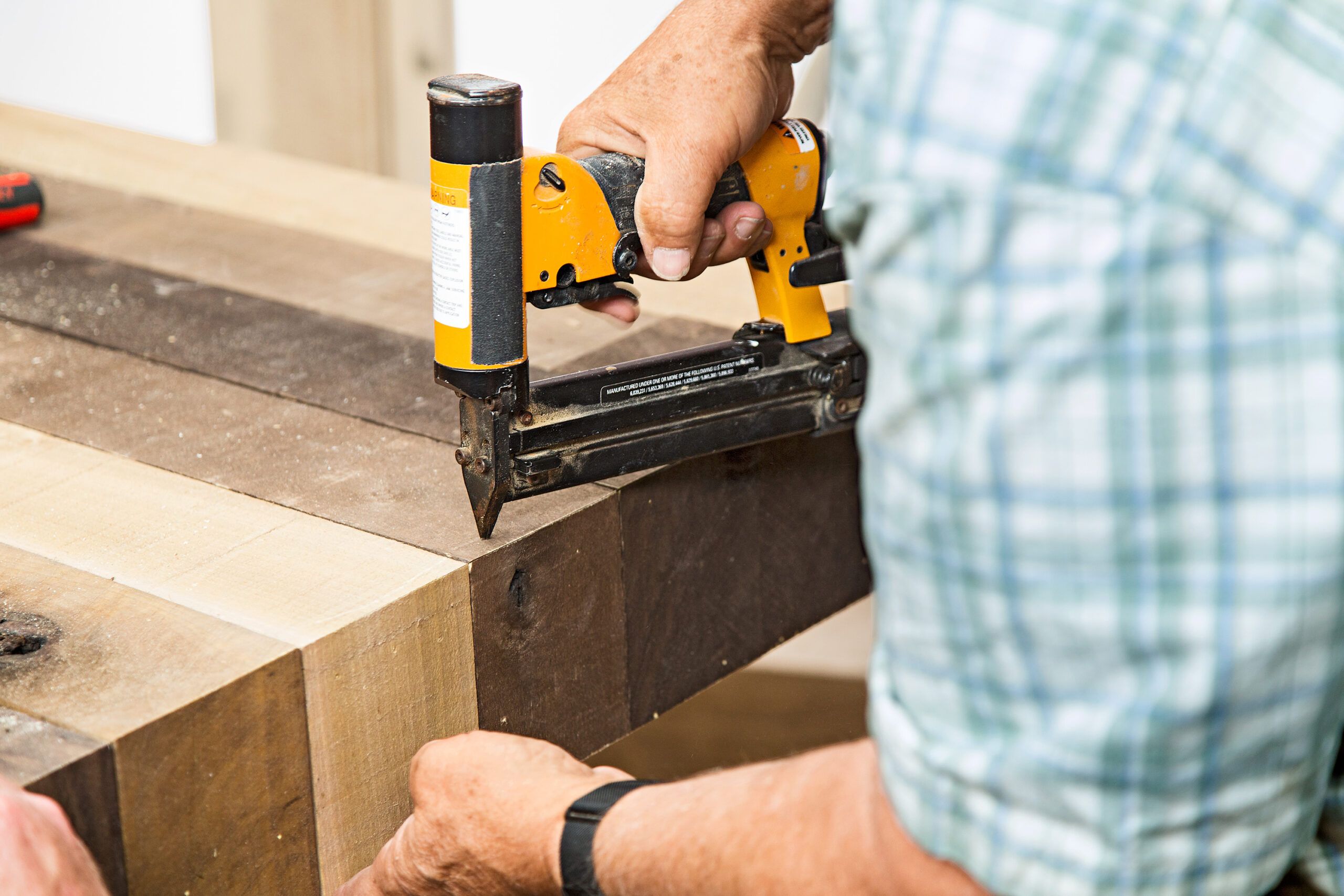
Once you’ve put the returns in place, you can secure them permanently. Follow the steps below.
- Carefully align the boards on the mitered return with the boards on the headboard face.
- Use a pin nailer to shoot three pins into the ends of each board while you hold the joint tightly together.
- Secure the return to the two-by-four ends using 2-inch brad nails.
- Repeat the process on the opposite side of the headboard.
Take your time with this step to create a tight, seamless fit between the face and sides of your headboard. This step will help you to achieve a finished and cohesive look.
8. Prep the Headboard’s Cap
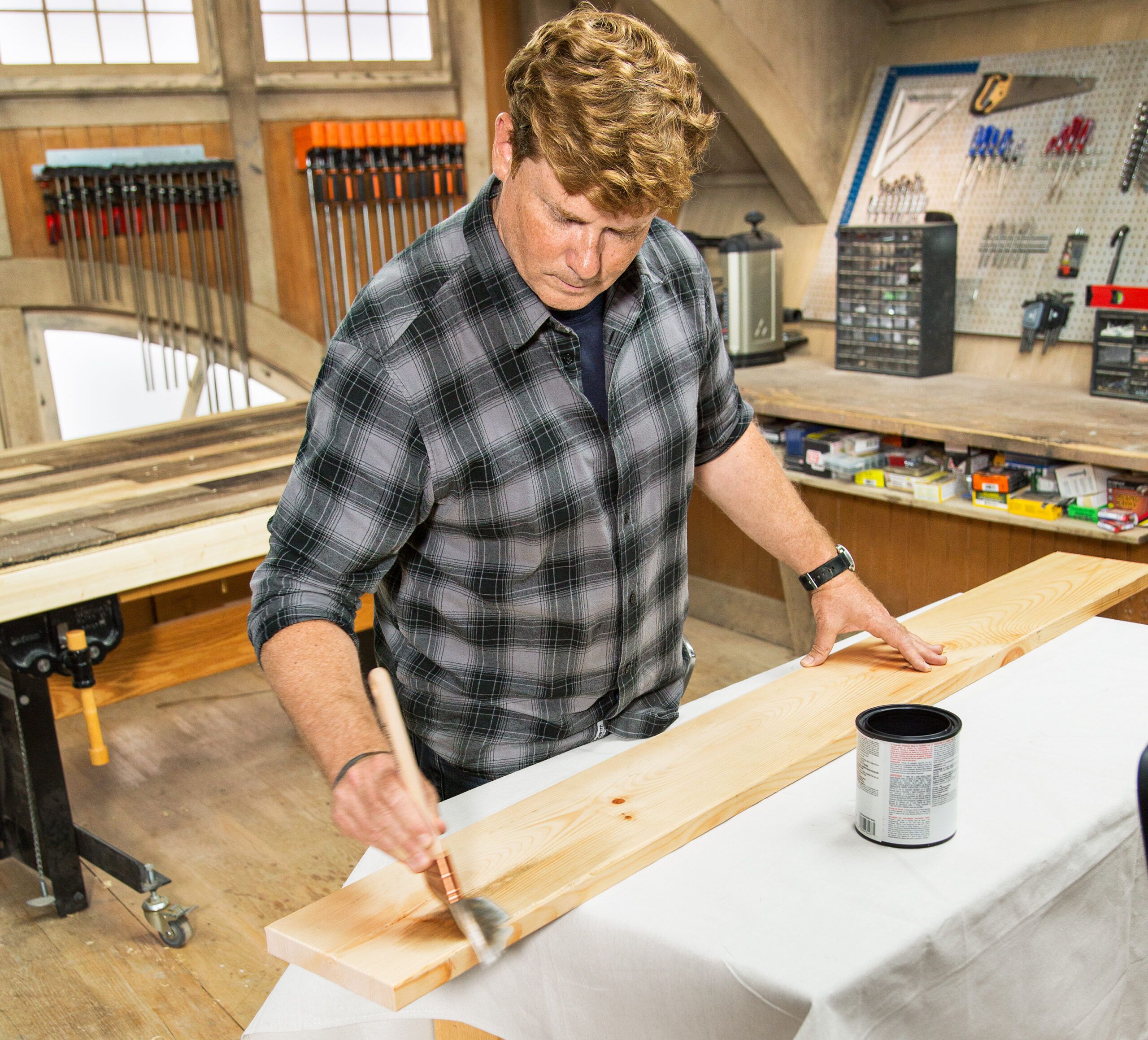
The headboard’s cap adds a finished look to your headboard and provides a smooth top edge. Follow the steps below.
- Cut a piece of 5/4-by-8 pine to length, and allow for a 2 1/2-inch overhang on each side.
- Use a block plane to round the edges of the pine board and create a softer profile.
- Apply a weathered wood accelerator product to age the wood and match your project’s rustic aesthetic.
- Allow the accelerator to dry completely before handling the cap piece.
9. Fasten the Cap
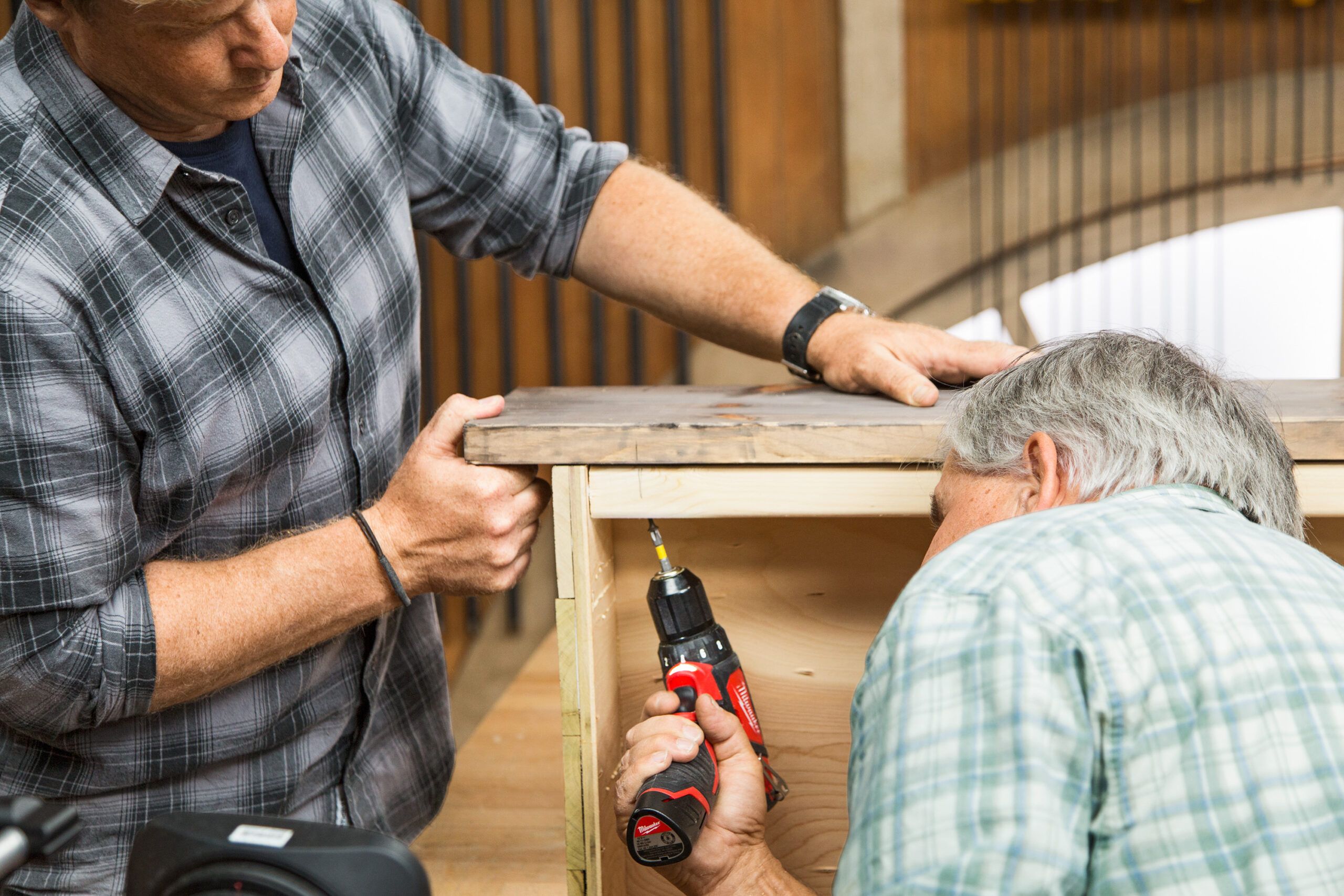
Attaching the cap is the final step in your construction. Follow the steps below.
- Drill four pairs of pilot holes through the headboard’s top two-by-four at even increments.
- Center the cap from side to side, and check that the back edge aligns with the back of the returns.
- Drive 2-inch deck screws through the pilot holes and into the cap.
- Countersink the screws slightly to allow for wood filler.
10. Finished Headboard
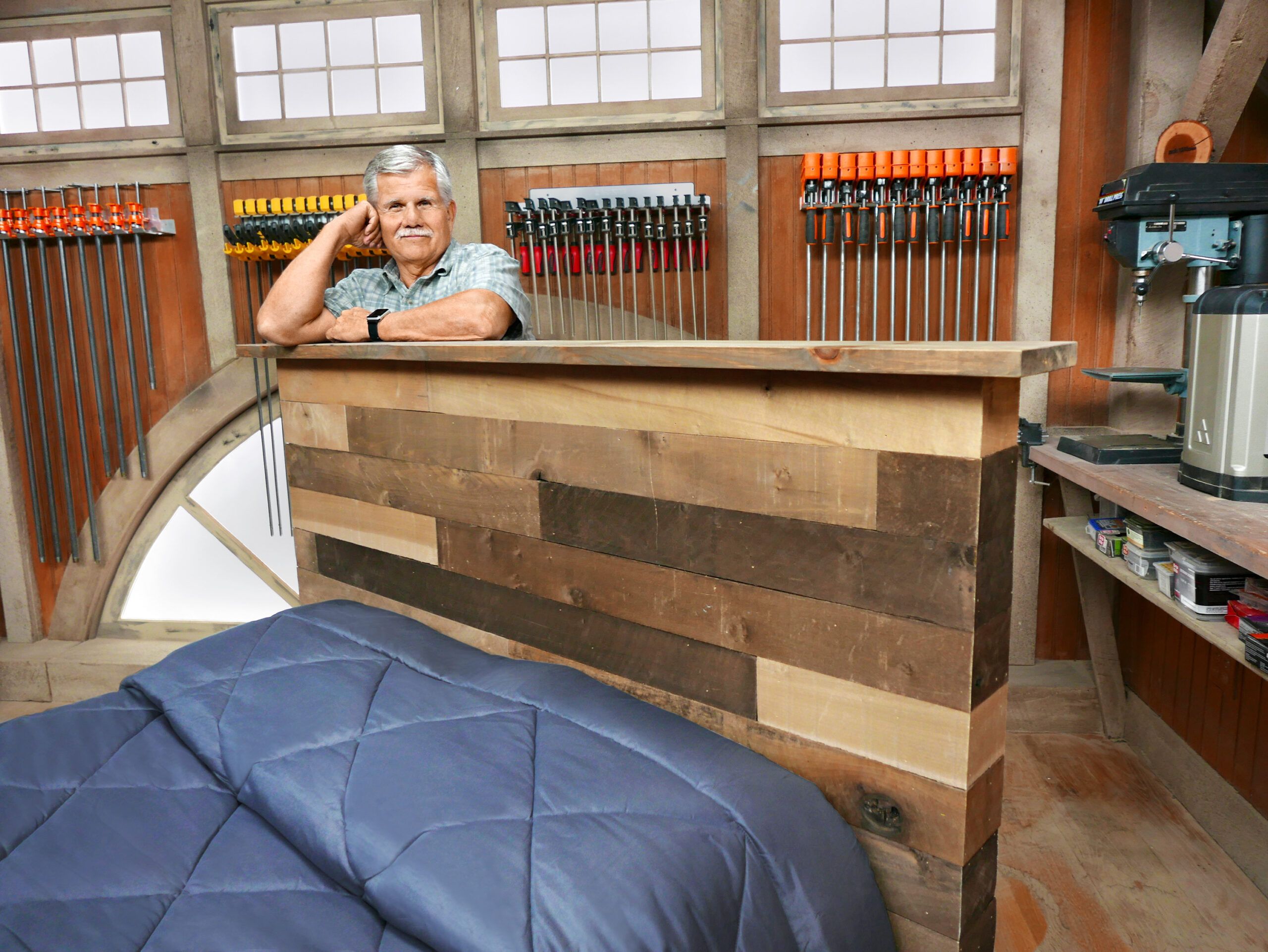
Follow the steps below to complete your rustic headboard project:
- Sand the entire headboard with 80-grit sandpaper to remove any splinters or rough edges.
- Apply two coats of oil-based, wipe-on polyurethane with a satin sheen.
- Allow each coat to dry completely, and lightly sand the headboard between applications.
- Attach the headboard to your bed frame or wall using the appropriate mounting hardware.
Your finished headboard combines the charm of weathered wood with the durability of modern materials, which creates a stunning focal point in your bedroom.
